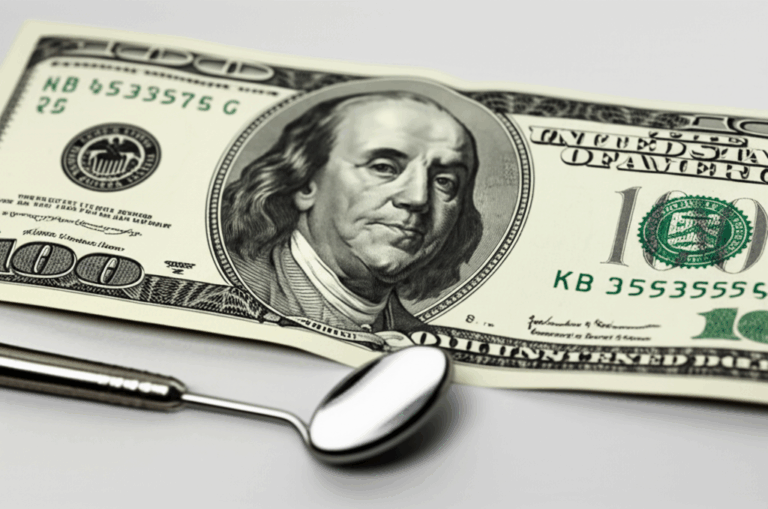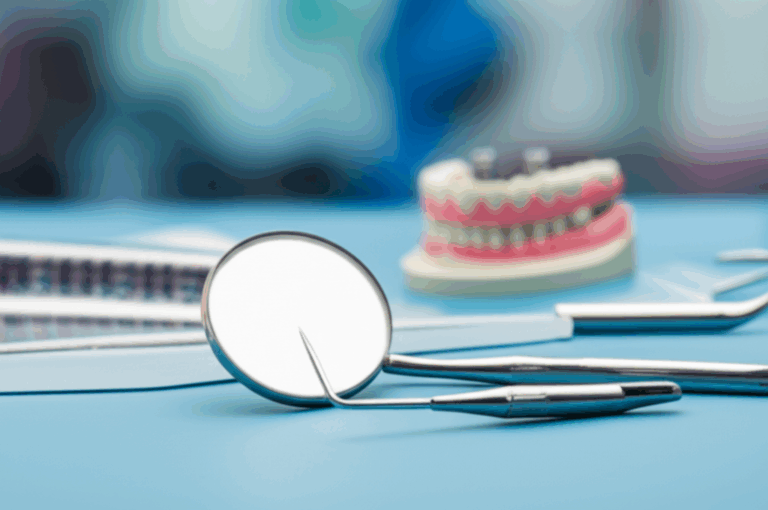
How Long Have Dental Implants Been Around? A Simple Guide to Their History & How Long They Last
Ever wondered how long dental implants have been helping people smile? This article looks at the interesting story of replacing teeth over the years, explains why dental implants last so long, and shows what makes them the best choice for missing teeth. Whether you’re curious about their history or thinking about implants for yourself, you’ll find answers to your biggest questions here. By the end, you’ll know why millions of people trust dental implants for a smile that lasts.
Table of Contents
What Are Dental Implants? Why Do People Need Them?
Let’s talk about a problem so many people have: losing a tooth. Maybe it’s happened to you, or you’ve watched a friend have a hard time. Lost teeth can make it hard to chew, difficult to speak, and can make you feel less like smiling. Dentures can move around, and bridges might not last. This is where dental implants come in, offering a strong, long-term fix.
Dental implants are small posts, usually made of titanium or zirconia, that work like fake tooth roots. Dentists place them into your jawbone, and after a while, the bone joins with the implant. This holds new teeth (like crowns, bridges, or dentures) safely in place, letting you eat, talk, and smile like you did before.
Many people ask, “How long do dental implants last?” or “Are dental implants really safe?” To answer these questions, we need to look back in time.
Where Did Dental Implants Begin? A Look at Early Tries
Would you believe that the idea of replacing teeth is thousands of years old? Long before today’s dental implants, people tried all kinds of things to fill the gap when a tooth was lost.
Old Ways to Replace Teeth:
- Mayan civilization: Scientists who study the past found ancient Mayan skulls with seashell pieces shaped like teeth, put into empty tooth sockets.
- Ancient Egypt: Egyptians tried using ivory, bone, and even gold wires to hold fake teeth.
- Roman Empire: Some Romans tried using iron pegs and other metals as fake roots.
But here’s the problem: None of these materials would stick to the bone like real teeth do. Infections were very common, and these tries didn’t help much.
In the 18th and 19th centuries, dentists and inventors in Europe and America tested animal teeth, gold, platinum, and even porcelain. They knew people needed something better than gaps in their smile, but their ideas didn’t work for long. Why? Scientists didn’t yet know how to stop infection or get materials to join with living bone.
Key Takeaway: People have wanted permanent tooth replacements for a very long time, but early attempts weren’t safe or stable.
Who Discovered Modern Dental Implants? The Story of Osseointegration
The real big discovery happened in the 1950s in Sweden. Dr. Per-Ingvar Brånemark, a doctor who works on bones, was studying how blood flows in rabbit bones. He used small titanium chambers for his research. When he was done, Dr. Brånemark tried to take out those titanium chambers… but they were stuck! The bone had grown onto them so tightly, they couldn’t be removed.
He called this connection osseointegration. It means “bone joining.” All of a sudden, he had the answer: If titanium could join with bone and stay there, maybe doctors could use it to hold new teeth in place.
In 1965, Brånemark placed the first titanium dental implants in a man named Gösta Larsson, who had no teeth left in his lower jaw. For over 40 years, those implants worked perfectly, holding a full set of teeth until Mr. Larsson passed away.
At first, many dentists didn’t believe Dr. Brånemark’s idea would work. But his careful research and his patients’ success stories changed their minds. Finally, at the 1982 Toronto Conference, dental experts from all over the world agreed: Implants really worked.
How Did Dental Implants Change After the 1960s?
After Dr. Brånemark’s success, things started to happen fast. Dental researchers and engineers worked together to make implants that were safer, stronger, and would last longer.
How Implants Got Better:
- The Brånemark System set the rules for everyone on how implants should be placed and taken care of.
- Dentists learned to change the implant’s shape, size, and surface for different types of jawbones.
- New surgery tools and cleaning methods made getting implants much safer.
By the 1990s and early 2000s, new technology changed everything. Digital x-rays, computer-guided surgery, and even 3D printing made a huge difference. Now, digital dental labs can help plan and create implants that fit each patient perfectly.
What’s Available Now:
- Mini dental implants help people with small spaces or not enough bone.
- All-on-4 and All-on-6 systems give people a new smile in one day by attaching a full set of upper or lower teeth to just a few implants.
- Computer-guided placement, 3D scans, and planning on a computer make everything more certain and easy for patients.
Takeaway: Dental implants are always improving. Technology helps dentists give you the most natural-looking smile possible.
What Materials Are Used in Today’s Dental Implants?
The materials used for dental implants are very important. Dentists need something strong, safe, and that living bone accepts. Two main options are used today: titanium and zirconia.
- Titanium: This metal is light but very strong. Most importantly, your bone accepts it. In fact, thousands of studies show that bone grows right onto its surface, making it very strong and permanent. Titanium implants almost never cause allergies.
- Zirconia: This option without metal is white, like a real tooth root. It is a great choice for people who want a solution with no metal. These are newer but are getting more popular every year.
Sometimes, dental ceramics are used to make the crowns and bridges you can see, which attach to the implants and give them a look just like real teeth. If you want the most natural look, a special crown and bridge lab can help.
Important Note: Every material used today goes through very careful safety testing and is approved by the FDA.
How Long Do Dental Implants Really Last?
This is the big question, right? When you get dental implants, you want something that will last a long time.
Here’s the good news:
- Modern dental implants, when you take good care of them, usually last 25 years or more. Many last a lifetime.
- Studies show that over 90% are still in place even after 20 years.
- The crown (the part that looks like a tooth) may need to be replaced after 10–15 years, but the implant root is made to be permanent.
What Helps Them Last Longer?
- Good brushing and flossing: Brushing, flossing, and regular dentist visits keep your implant healthy.
- Your health: Smoking, diabetes, or weak bone can make implants not last as long.
- A good dentist: Skilled dentists using the right tools (like those from an implant dental laboratory) make a big difference.
- Regular check-ups: Finding problems early makes them easier to fix.
Fact Table: How to Make Dental Implants Last
| Factor | How it Helps Your Implants Last |
|---|---|
| Brushing and flossing daily | Stops infection and gum problems |
| No smoking | Protects your bone and gums |
| Regular cleanings | Keeps your mouth and implant healthy |
| Good bone quality | Holds and supports the implant |
| Regular dentist check-ups | Finds problems before they get big |
Are Dental Implants Safe and Successful?
You want to feel good about your choices, especially for your teeth. The truth is, dental implants are one of the safest and most successful treatments in dentistry today.
- Success rates: Implants in healthy people work 95–98% of the time—and even more in some studies.
- Problems are not common: Most patients have no issues, especially when they follow the instructions for taking care of them.
- Based on science: Everything about implants has been studied and tested, from how your body accepts them to how long they last.
Implants even help protect your jawbone by stopping it from getting smaller after a tooth is lost. That means your face keeps its natural shape, and your smile looks younger.
If you’re a dentist or looking for high-quality work, a china dental lab works with clinics all over the world to design strong, natural-looking implants and crowns.
Who Is a Good Fit for Dental Implants?
Dental implants help all kinds of people get back what they’ve lost—confidence, comfort, normal eating, and a great smile.
Who is a good fit for implants:
- People missing one tooth, several teeth, or all their teeth
- Those who have trouble with loose dentures
- People who want a permanent, strong fix (not one that clicks or moves)
- Anyone with healthy gums and enough jawbone
People of all ages can often get implants. Dentists now have ways to safely help even those who have lost some bone, using special methods like bone grafting or sinus lifts.
It’s easier than ever to fix your smile with implants. And working with the right dental experts, like an advanced zirconia lab, means you’ll get a result that looks real and lasts a long time.
What Does the Future Hold for Dental Implants?
Here’s the exciting part: dental implants are still getting better. What once seemed like something from a movie is now normal dental care for millions.
What’s coming next?
- 3D dental printers create custom implants faster and with amazing detail.
- Computer-guided surgery makes putting in implants almost perfect, making healing faster.
- New materials like super-strong ceramics—and maybe even materials that help the bone grow faster!
- Digital design labs (3d dental lab) offer implants made just for you for almost any situation.
Technology and science are making dental implants even more long-lasting, safer, and better looking than ever before.
How Do You Get Started With Dental Implants?
If you think dental implants could be right for you, don’t wait—talk to a dentist who knows what they’re doing when it comes to replacing teeth.
Steps to take:
Remember, not all dentists or dental labs are the same. Pick a team that is known for being skilled and caring for their patients.
Summary: What Should You Remember?
- Dental implants have old roots—but modern, successful implants have been around since the 1960s.
- Dr. Brånemark’s discovery of osseointegration changed how we replace teeth forever.
- Today’s implants use safe materials like titanium and zirconia, giving you a strong and healthy smile.
- If you take care of them, dental implants can last 25 years or even a lifetime.
- Implants have high success rates, make people happy, and protect your jawbone.
- If you want comfort, confidence, and a natural look, implants are a great choice.
- New technology will only make future implants safer and better.
- Talk with a dentist about your options—and work with expert dental labs for the best results.
Key Points to Remember
- Dental implants are safe, strong, and have worked well for decades.
- Ancient people tried to replace teeth, but real modern implants started in 1965.
- Good oral care and regular dental visits mean implants can last a lifetime.
- Ask a dental expert if implants are right for you. They may work with advanced labs for the best fit and look.
- A long-lasting, healthy smile is possible—thanks to science, skill, and the latest technology.
References:
- Brånemark PI, et al. Osseointegrated Implants in the Treatment of the Edentulous Jaw. Scand J Plast Reconstr Surg Suppl. 1977;16:1-132.
- Albrektsson T, et al. The long-term efficacy of currently used dental implants: a review and proposed criteria of success. Int J Oral Maxillofac Implants. 1986;1(1):11-25.
- American Dental Association. Dental Implants.
- International Congress of Oral Implantologists.
Thinking about dental implants? Talk with your dentist—and find a partner lab that cares about your smile as much as you do!








